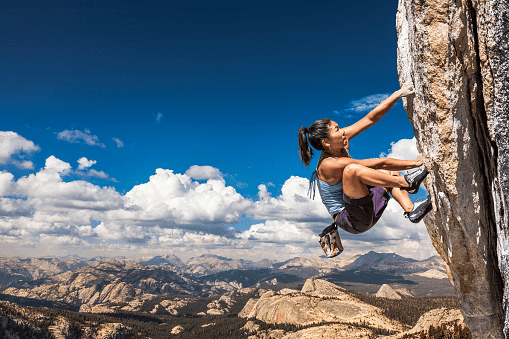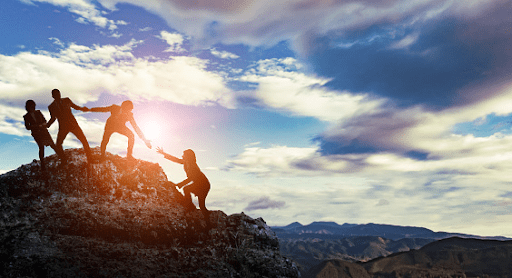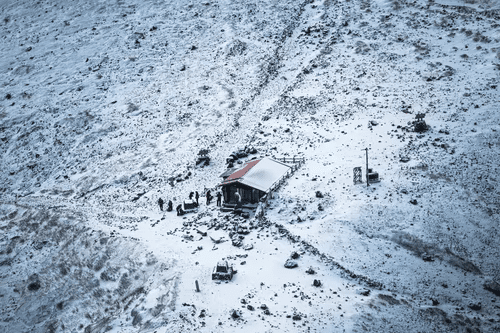As you hike up the mountain, your heart starts to race. The air becomes thin, and the ground looks like it’s moving beneath your feet. You’re finally at the top of Mount Everest! It’s exhilarating but also very dangerous.
Mountaineering can be a thrilling experience for people who are looking to get out of their comfort zone. However, it’s crucial to take the necessary precautions before embarking on your journey since there is a risk of injury or even death. This blog post offers ten tips for ensuring your safety while mountaineering!
Weigh the Risk of Avalanche
Whether you’re looking for the aconcagua expedition cost or any other mountaineering trip, find out what to expect regarding weather and terrain conditions. Stay updated on weather forecasts of the area since weather can change quickly in the mountains. This is especially important if there’s been heavy snowfall recently or during winter months when avalanches are most likely.
This lets you know what to expect when you’re on your way up, allowing you enough time to cancel or postpone if necessary. Furthermore, when you have this information, you’ll be able to plan your route accordingly and carry everything you need for a successful journey.
Don’t Go Alone if You’re New to the Sport
Mountaineering can be enjoyed with friends, but it’s always best to have an experienced mountaineer on hand in case anything goes wrong! If you’re a beginner, find someone with years of experience to tag along.
Carry the Essentials
Also, ensure your backpack is stocked with all the essentials! The essential things are food and water because it’s hard to stay motivated in such harsh conditions once you run out. Other necessary items include:
- A first aid kit
- Toilet kit
- A map
- Sunscreen and sunglasses
- Waterproof clothing
- Boots that are sturdy enough to climb over rough terrain
- Protective gear like gloves and balaclava for cold seasons
- Warm clothes in case the temperature drops!
- Flashlight
- Hiking poles
Prevent Altitude-Related Illnesses
There’s a high risk of altitude-related illnesses as you climb, so make sure to know the symptoms of each disease and how it affects your body. The most common altitude-related condition is Acute Mountain Sickness (AMS), which can cause headaches, nausea or vomiting, fatigue, dizziness, and appetite loss.
Don’t ascend too quickly if you are moving high into the mountains to prevent this from happening. AMS will happen when climbing above 2500m, so if you’re going to be in these areas for a longer period, it’s wise to ascend at a slower rate and spend more nights acclimatizing than just one night.
Ensure You Have an Emergency Shelter
The importance of an emergency shelter can not be stressed enough. If you get stuck somewhere overnight because of an injury, bad weather, or any other circumstances, your protection will play a vital role in keeping yourself warm and dry. It’s also wise to carry a whistle that may come in handy when trying to signal for help if needed.
Prepare for Snow Storms
If you’re anticipating snow, it’s a good idea to carry a snow shovel. Having one of these will allow you to dig out your tent, make an ice cave or tunnel if stuck in the snow overnight, and much more survival uses.
Ensure You Have a Means of Communication
A mobile phone can come in handy if you find yourself lost. Make sure to take one with you and keep it fully charged. If there’s no reception in the mountains, you can use other means of communication such as walkie-talkies.
Plan Accordingly
The amount of preparation for a hiking trip largely depends on the length, location, and terrain. It’s essential to have an idea about what you want in your hike so that it can be easily mapped out before setting off.
And if you’re hiking as a group, you should have a plan that includes what to do in case someone is missing and how to communicate when in need. Try to mark the trail with small flags or cairns (stacks of rocks). These items will help you find your way back if needed.
Handle Casualties with Care
In the event of an injury or illness, you need to be able to treat casualties immediately. All hikers in your group must know basic first aid techniques and are trained on using the equipment they have with them. Also, keep calm in emergencies and always remain in control, ensuring your casualties are attended to at all times. This keeps them calm and reassured.
Take Your Time
Rushing up the mountain isn’t recommended. Some people might be fit and feel okay to go at a faster pace, but this puts unnecessary stress on their bodies and can cause injuries that will slow you down or stop you from reaching your destination altogether. Remember that going slowly doesn’t mean that you’re not making progress – it just means that you prioritize safety.
Have Fun!
When done right, mountaineering is an exhilarating experience that can give you great memories. If you’re planning a mountaineering trip, make sure you have all the essential equipment and supplies and use these safety tips to ensure you stay safe on the mountain.
References
https://www.healthline.com/health/mountain-climbing-safety#stay-safe
Help keep news FREE for our readers
Supporting your local community newspaper/online news outlet is crucial now more than ever. If you believe in independent journalism, then consider making a valuable contribution by making a one-time or monthly donation. We operate in rural areas where providing unbiased news can be challenging. Read More About Supporting The West Wales Chronicle


























